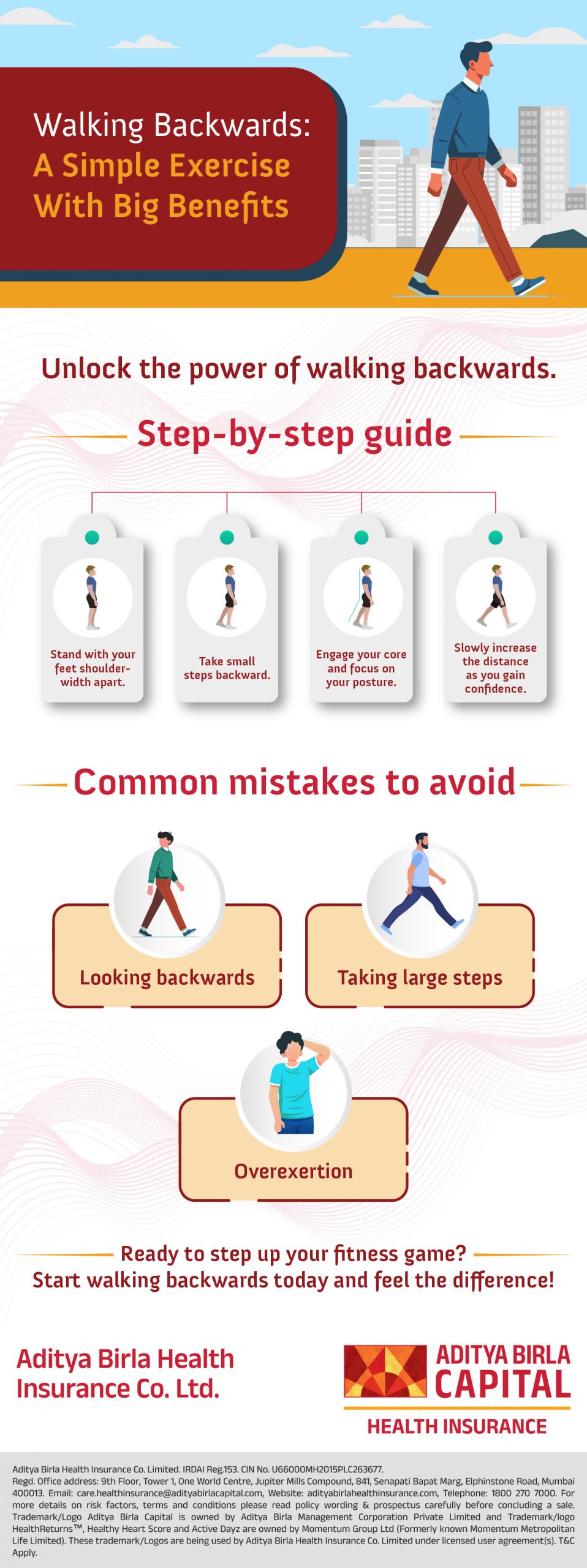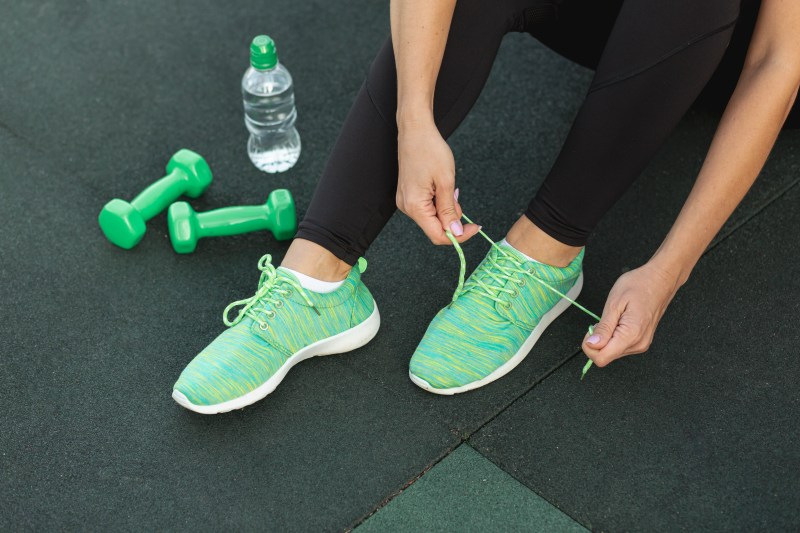
While many of us prefer walking forward as the go-to form of exercise, it is not the only option. Backward walking provides many benefits, too.
What is backward walking?

Backward walking, as the name suggests, is the opposite of forward walking, where you strike the ground with your heel first, and forward momentum originates from your ankle. In backward walking, power derives from your knees and hips, with your toes making contact with the ground first.
Is it just a fad?
While walking backward might feel like a trend, it is more than that. It offers numerous benefits, including enhanced balance, coordination, and muscle engagement, making it a valuable addition to any fitness routine.
Advantages of walking backwards
Let us explore the advantages that walking backwards offers:
Enhanced muscle engagement
Walking backwards engages many of the same muscles as regular walking, including your hamstrings, calves, and quadriceps. However, walking backward targets those muscles differently and activates some additional muscles like the quadriceps, hamstrings and gluteal muscles.
Improves brain health
Walking backward enhances coordination more than forward walking. This is particularly beneficial if you are undergoing a physical rehabilitation program.
Increased caloric burn
Walking backwards is a completely different movement from what you’re accustomed to, so your body needs to adapt and adjust. As your muscles move in various directions, your heart rate increases, which can help you burn more calories.
Enhances core strength
Walking backwards can enhance core strength by engaging various muscles, particularly those in the back, abdomen, and lower limbs. It also improves balance and coordination.
Improved joint health
Backward walking benefits joint health, particularly knee and hip pain. It reduces stress on these joints and strengthens surrounding muscles.
Improving your posture
Many slouch for hours daily while driving, texting, or sitting at a desk. Often, this poor posture carries over into walking. By practising backward walking regularly, you may notice an improvement in your posture. Strengthening your gluteal muscles, quadriceps, and hip flexors can also assist with maintaining good posture.
Who can benefit?
Consider adding backward walking to your exercise routine if you want to challenge yourself and use a different combination of muscles when you work out.
If you work out under the guidance of a trainer or participate in physical therapy, you could discuss your interest in backward walking with your trainer or therapist and ask them to watch you for safety while you practice.
Backward walking can be beneficial by pushing your body to build new skills, but it can also be dangerous if you cannot do it safely. It might not be safe for you to walk backward if you are living with a disability that could increase the likelihood of an injury.
Time to spend walking backwards
Aim to include 10-20 minutes of backward walking a few times a week. Also, gradually increase the duration as you become more comfortable and adjusted.
Safety tips for backward walking
It can be tricky to walk backward. You must be mindful of the following tips:
Wear appropriate footwear

To walk backwards safely, prioritize supportive footwear with good arch support, cushioning, and a slightly flexible sole. Ensure a snug fit and avoid loose or high-heeled shoes.
Be mindful of surroundings
You want to avoid bumping into others and hurting yourself (or them). If you use a popular walking path or track, choose off-peak times. Stay aware of your surroundings.
Use support if necessary
Utilize support such as a sturdy wall, counter, or handrail to walk backward safely, especially when beginning. Additionally, select a clear, obstacle-free path while staying aware of your surroundings.
Start backward walking
Consider including backward walking in your walking routine. Start slowly, increase gradually, pay attention to visibility, and challenge yourself this way when you have energy.
Ensure that you are not around moving vehicles while you walk backwards and that you walk backwards only on a flat and even floor or ground. You could also hold on to a rail or a counter to maintain your balance.
A fitness boost
Unlike other fitness trends, backward walking is not merely a fad. It is an effective exercise that has proven its value over time. So, make it a point to include it in your daily workout regime and enhance your fitness journey.
Key Takeaways
- Backward walking is not a fad; it is helpful to you.
- Walking backward helps you manage weight and improves brain and joint health.
- Wear proper footwear and use support when necessary while walking backward.
Stay tuned to the Activ Living Community. Keep up to date with the latest health tips and trends through expert videos, podcasts, articles, and much more on nutrition, fitness, mindfulness, and lifestyle conditions like Asthma, Blood Pressure, Cholesterol, and Diabetes. Activ Living ke saath sahi sehat ki shuruat ABHI karo.
You may also be interested in the following blogs:
- Why Walking Is The Perfect Gateway To Fitness
- Footsteps To Wellness: The Benefits Of Walking Barefoot You Need To Know
Popular Searches
How to lower blood pressure | Fruits good for liver | Unhealthy foods | Ragi Benefits | Basal Metabolic Rate | Acupressure points for High Blood Pressure | Ayurvedic medicine for blood pressure | How to control cholesterol at home | Homeopathy for Asthma | Biological Age | Home remedies for TB | Natural beta blockers | Negative effects of internet | Types of walking | Blood pressure calculator | Blood sugar calculator | BMI Calculator





 1800-270-7000
1800-270-7000






